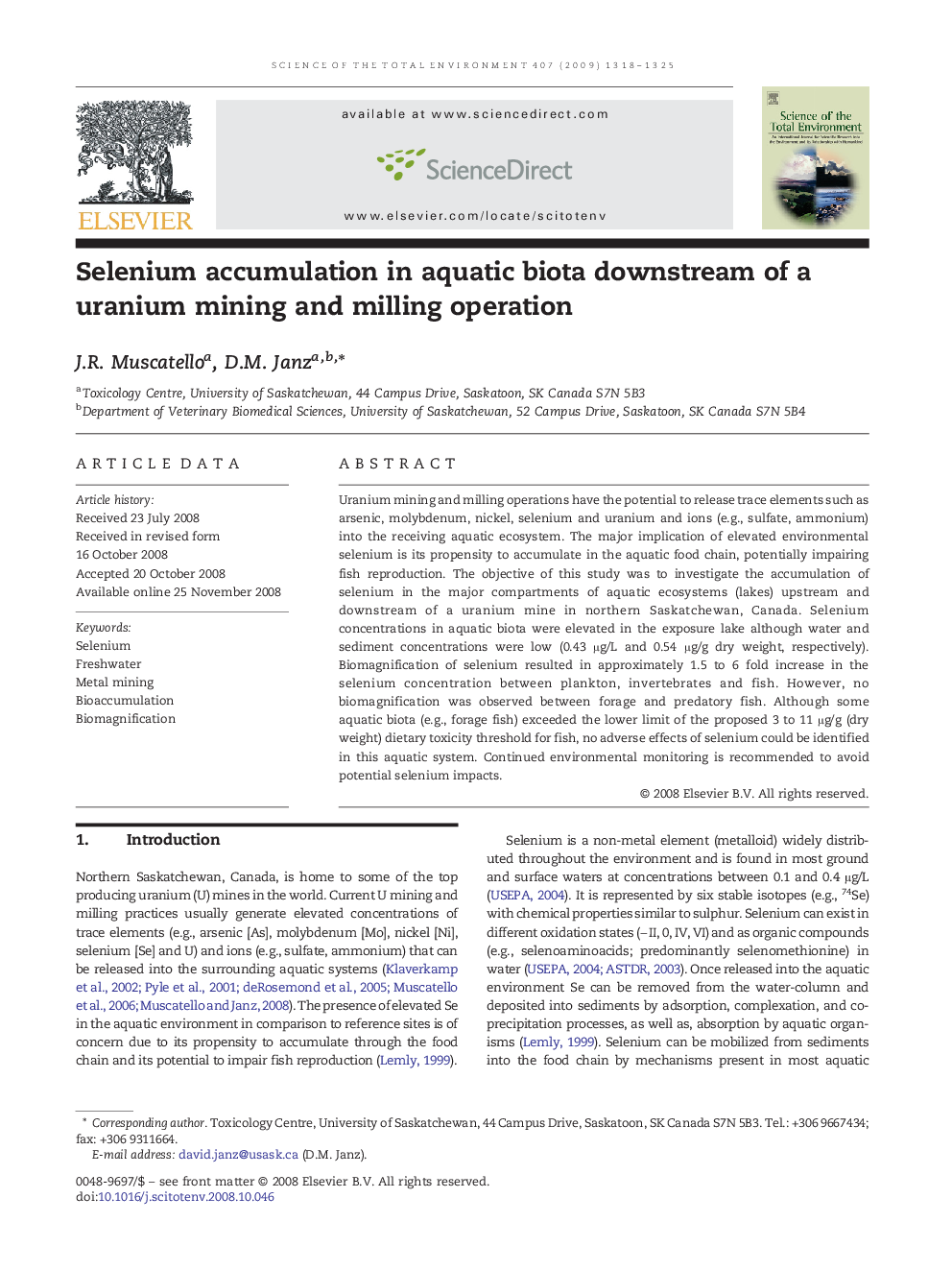| Article ID | Journal | Published Year | Pages | File Type |
|---|---|---|---|---|
| 4432412 | Science of The Total Environment | 2009 | 8 Pages |
Uranium mining and milling operations have the potential to release trace elements such as arsenic, molybdenum, nickel, selenium and uranium and ions (e.g., sulfate, ammonium) into the receiving aquatic ecosystem. The major implication of elevated environmental selenium is its propensity to accumulate in the aquatic food chain, potentially impairing fish reproduction. The objective of this study was to investigate the accumulation of selenium in the major compartments of aquatic ecosystems (lakes) upstream and downstream of a uranium mine in northern Saskatchewan, Canada. Selenium concentrations in aquatic biota were elevated in the exposure lake although water and sediment concentrations were low (0.43 μg/L and 0.54 μg/g dry weight, respectively). Biomagnification of selenium resulted in approximately 1.5 to 6 fold increase in the selenium concentration between plankton, invertebrates and fish. However, no biomagnification was observed between forage and predatory fish. Although some aquatic biota (e.g., forage fish) exceeded the lower limit of the proposed 3 to 11 μg/g (dry weight) dietary toxicity threshold for fish, no adverse effects of selenium could be identified in this aquatic system. Continued environmental monitoring is recommended to avoid potential selenium impacts.
